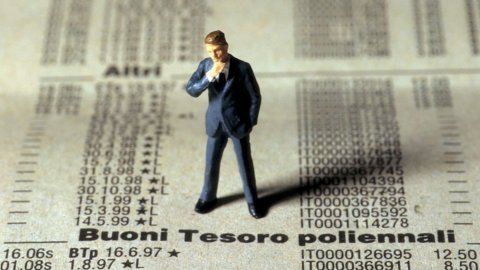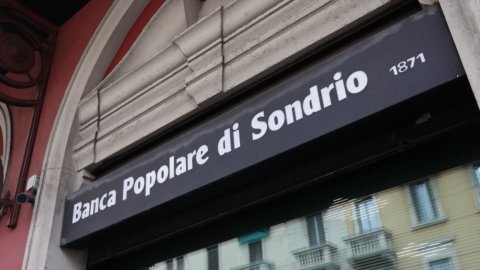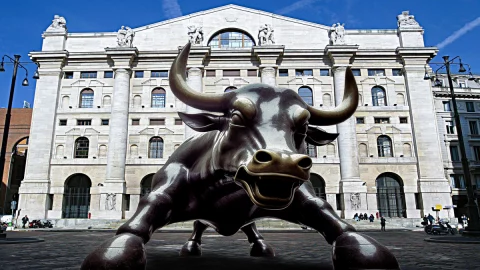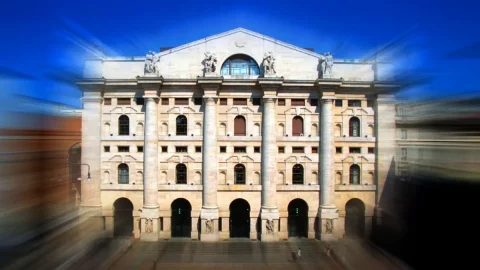It loosens, but not by much, pressure on government bonds of the periphery, Italy in the lead. At the end of the morning, the ten-year BTP rate was 1,78%, better than yesterday (1,81%) and the opening (1,86%). But in the trading rooms many are ready to press the "sell" button in the event that some central banker (such as the Frenchman Villeroy de Galhau who will speak at 18 pm) lets slip some "hawkish" signals.
As happened to President Lagarde, outwitted by a German journalist: to the question "but is she able to deny a rate hike within the year?", the central bank remained vague, trying to reassure operators yesterday about the trend in inflation. But in doing so, she only made matters worse: "After peripheral spreads widened sharply for the third day in a row, Lagarde did not provide any clear signals in her hearing that the dynamics are significant enough to respond," they say. Commerzbank analysts in a note to customers.
From here the rain of sales which on Monday invested the BTPs, which have always been considered (also due to the enormous amount of securities in circulation) the benchmark of theweaker wing of the euro area: when there is an appetite for risk on the markets, our BTPs are sought after. Instead, they are downloaded. As happens to an emerging country, without any particular reference to the political climate of the Bel Paese. How it is understandable, seen the amount of public debt (over 160% of GDP) but also for the determining weight of the ECB's purchases for the maintenance of our house accounts:
- In 2020-21, the ECB bought well over 100% of Italy's central public debt issued in the period.
- In 2022 it will drop to 60%, with the end of the Pepp programme
- In 2023, it is expected to drop to zero once the purchases of Quantitative Easing are exhausted.
But, beyond the tensions within the Eurozone, what matters is the inflationary wave which has hit the USA and, almost surprisingly, also Europe. For this reason, the data on consumer prices which will be released on Thursday in the USA will be decisive: it is expected for January an increase in 7,3%, already at its highest since 1981 but the number could be revised upwards. It is no coincidence that operators have raised their guard on Wall Street where, i Treasury yields US yields picked up again, with 10-year yields exceeding 1,88% for the first time since January 2020.
The market is eagerly awaiting Thursday's numbers. The question is whether the market will raise expectations on interest rate hikes and price a 50 basis point rate hike in March as this will contribute to another downside in US Treasuries. At that point Philip Lane, chief economist of the ECB, favorite student of Mario Draghi, will have the difficult task of convincing operators that the ECB will not follow the Fed, which has already planned up to seven rate hikes, with the prestigious consent of Lawrence Summers, the former Treasury secretary who unsuccessfully tried to convince the central bank and Janet Yellen to slow down the injection of capital into the economy before that would cause inflation to explode. Now Summers himself is asking for a more severe intervention than what the market suggests.
What will it be the effect on European rates? Goldman Sachs expects two hikes for the ECB within the year. Even more, it underlines the speed with which the market is anticipating the moves of the authorities. The 0,40-year German bund, the Eurozone benchmark, went from -0,22% to +XNUMX% in one month and could reach a return of half a point by the end of the year. In parallel, it predicts the increase in the spread between Bund and Btp but not more than 200 points.
This is the frontier that the central bank will tend to defend at all costs, especially on the occasion of French elections. The goal is to avoid withdrawing support from countries that need it most for their recovery. “From an economic point of view – reads the report – remaining accommodative is not an option, as the euro will weaken, weighing on energy prices, thus increasing inflation, but his choice as a 'hawk' must have a limit: the spread must not exceed 200 bp. In fact, since the end of the European sovereign crisis in 2013, the spread between the two countries has increased and remained above this level only twice: during the 2018 Italian elections and the 2020 Covid pandemic. A BTP spread - Bunds above 200 bps have been associated with bad debt levels in the past. The same is likely to happen this time."
In short, let's get ready not to rule out a possible 2,5% ten-year BTP yield unless investors are able to be convinced that the country is capable of returning to growth in a balanced and self-sustainable way. Provided that it is possible to do so, with markets, as Mario Seminerio writes, "that are waiting to discharge our debt as soon as it becomes clear that the safety net has been removed or has a large hole".





